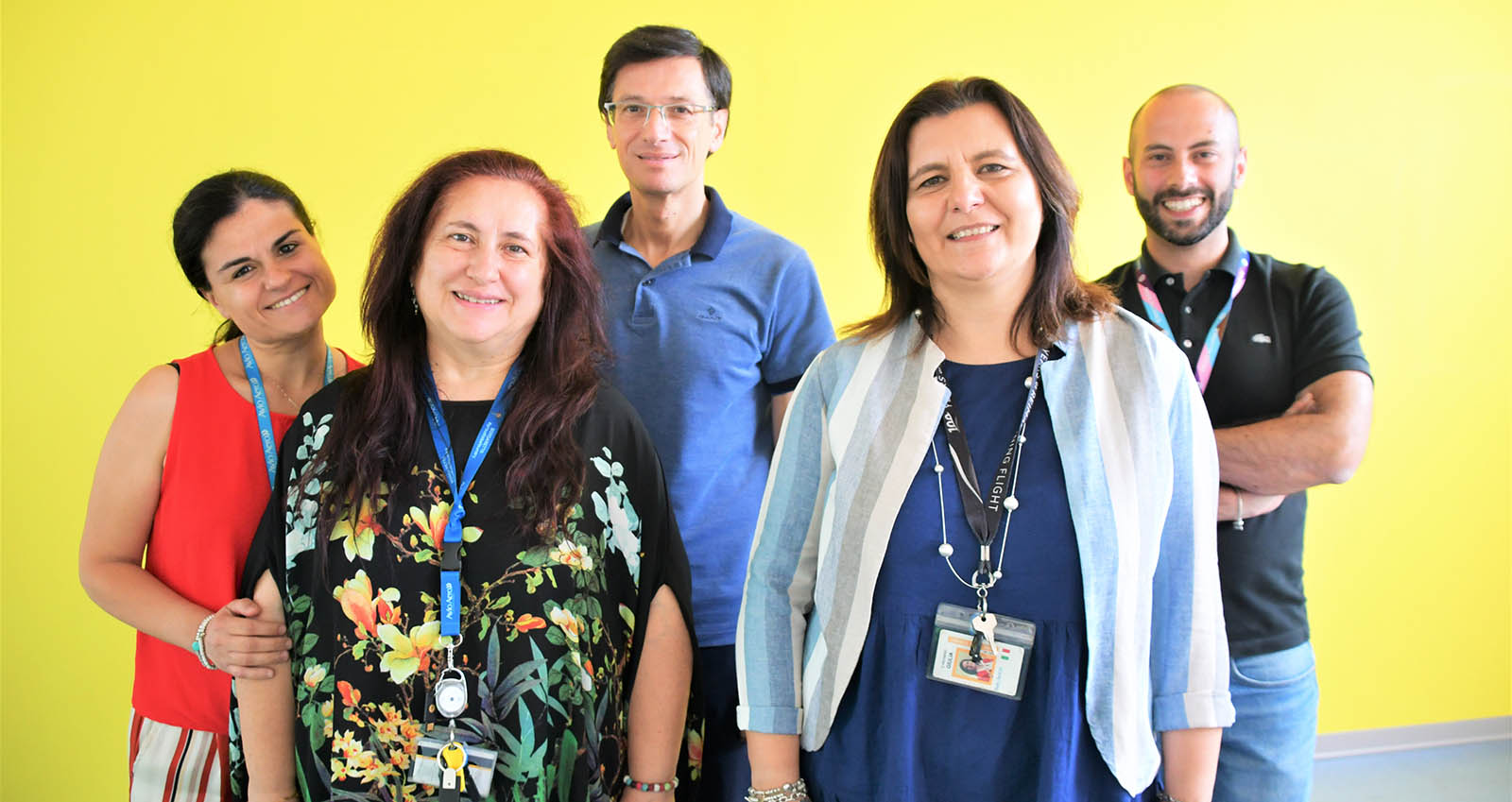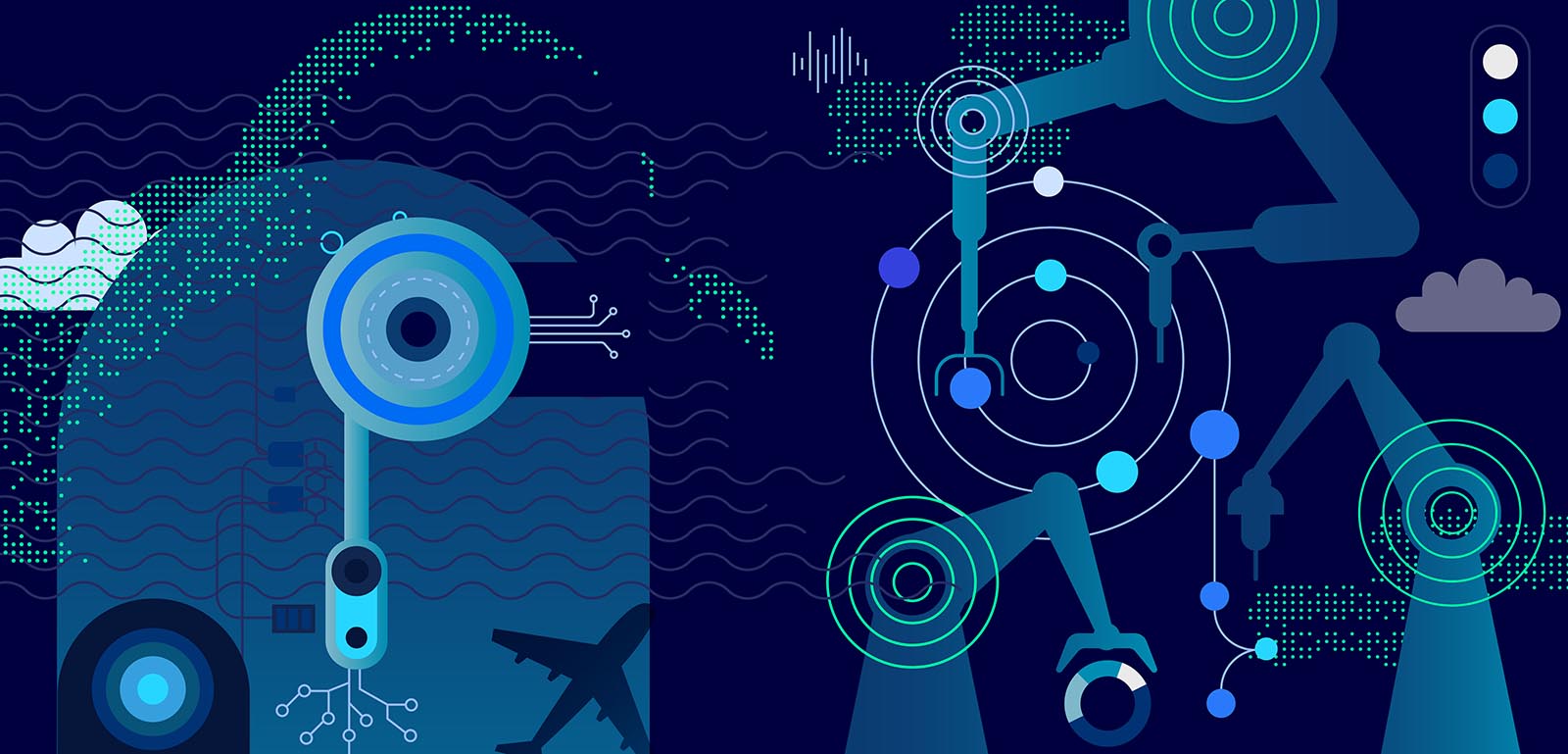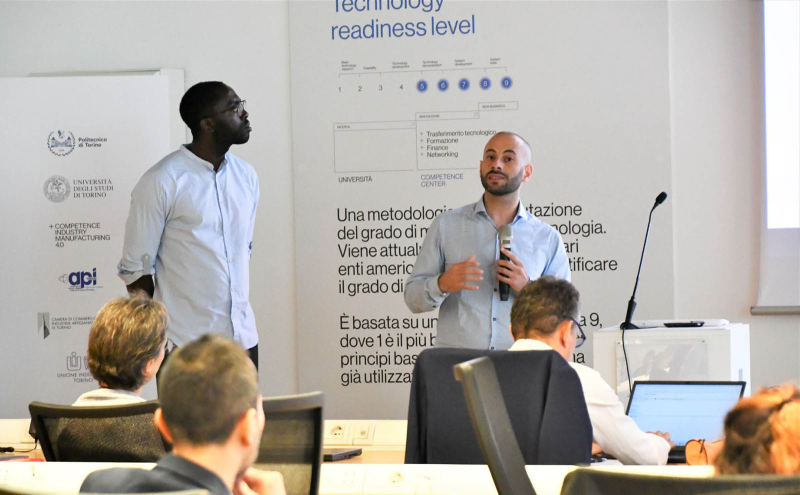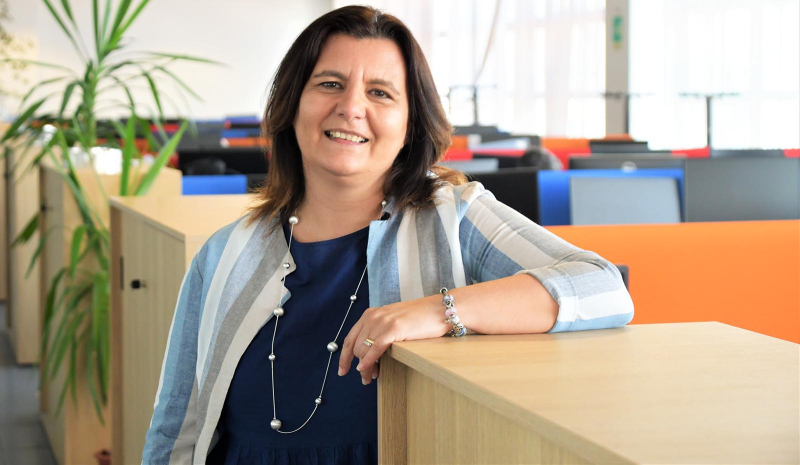Invent
AI has a human face
Digital technology and artificial intelligence experts from Avio Aero talk about their professional experience with the innovation that is redefining technical solutions of the future.
Oct 2023
Just as physics or quantum mechanics represents leading-edge scientific excellence studying phenomena and elements beyond traditional physics and mechanics, so it could be said that artificial intelligence (nowadays, called by the acronym AI) is opening up new, advanced scenarios for the digitization of the real world.
At Avio Aero, the path of digital innovation and transformation has always been extremely active and strategically crucial. For Computer Vision and AI, information technology experts have spotted a potential that offers a previously unseen perspective, where business and technology are integrated and the possible solutions are countless.
"In 2018 we started to study and experiment with AI, applying it to some critical processes, such as maintenance, to evaluate its viability and benefits. Each project involves a team with at least one reference from each business function and is led by our Digital Technology team to research and implement the best performing and most accurate solutions for products and processes" says Giulia Archero.
Aschero has an original STEM vocation: she was attracted to computers and IT from her teen age, around those she built her scientific and professional career. She leads Avio Aero's Global Supply Chain (GSC) Digital Technology team, made up of eight experts including Matteo Buscicchio, a young Technical Project Manager who is currently in charge of AI themes.
"AI, both historically and scientifically, is a tech solution with great potential, so much so that we are now seeing it applied to various areas: from home automation to industry, marketing, photography and the various apps in our smartphones," explains Buscicchio. "However, in the industrial world, the spreading process of this technology is not going to have the same speed".
Dealing with machines and technologies that fly and safely perform a complex task, namely air transportation, the aviation industry must always ensure extremely high reliability and redundancy in its processes. “Any technology - whether mechanical, electronic or digital - must go through the stages of maturation and then measurement according to indicators with extremely strict tolerances, before being adopted”.
That is why Avio Aero is researching and testing AI technologies in order to continuously improve its internal processes, production and logistics for example. "Our goal is to promote the transformation of supply chain business processes," Aschero says. "Right now, we are focusing on the factory, at the heart of the business, where our ambition is to achieve a Smart Manufacturing model in which technologies such as AI, the Cloud and the Internet of Things (IoT) are integrated and interactive."
The GSC Digital Technology team, through projects involving many other colleagues and related specialties, is redefining operations such as quality inspections (including x-ray analysis, instrumental or visual inspections on gears), predictive maintenance (studying the wear prediction capabilities of components and engines through machine learning algorithms), controls in the assembly process, and related automations.
As part of GE Aerospace, the company follows an AI solution development path integrate in the global digital innovation strategy: in its other locations around the world, entire teams of specialists study so-called industrial "use-cases" ranging from the processes mentioned above to the most advanced manufacturing techniques such as additive technologies.
"The vision shared with GE Aerospace is to research, evaluate, and develop the most suitable AI solution with respect to the specific use-case before defining an overall platform, while making sure to capture the innovations present in the state of the art," says Buscicchio, speaking of the cooperation with the central Data Science & Analytics team based in Cincinnati (Ohio).
Although at its dawn, AI technology can already present an infinite number of solutions and, therefore, the first complexity reported by specialists is to explore the countless possibilities for solving or improving a given technical area. "The correct selection of technology needs specific studies and expertise, since we find ourselves in an industrial environment that requires specific levels of performance," continues Buscicchio. “Our collaboration thus extends to research centers and universities to identify partners with valid and concrete experience in AI and Computer Vision."
The AI solutions that can be adopted in this area must therefore have a certain level of maturity, or at least algorithms that can be "trained" in a structured way to reach the level of reliability and accuracy implicit in aeronautical processes.
While training and developing artificial intelligence, the role of the human component remains paramount: AI solutions in fact benefit the users who keep up with this technological evolution. They learn new operating models and functions of a device or machine, ultimately elevating its role to a supervising one, reducing risks or defects.
Alongside all this technical and scientific work of development and evaluation, there is the estimation and financial benefit for the business: the return on investment or cost-benefit ratio is the key to choosing a specific solution. "In these phases, collaboration with colleagues in other functions becomes more intense to calculate impact," says Buscicchio, “we range from market research to literature analysis of the most evolved AI logics and models and, only after an accurate technological benchmark is completed, can we identify the most promising solutions, starting the industrialization phase to implement a hardware or software."
"We are training AI to identify single blades of an engine turbine and any possible defects"
Today at Avio Aero, several solutions are being tested whereas some have also already been adopted. For example, OCRs (Optical Character Recognition) systems for inspections that use AI to read and route specific serial numbers of engine parts are in operation at Avio Aero Polska (Bielsko Biala) and will soon be adopted at Pomigliano d'Arco and Rivalta. Or the Model Checking system which, at the Borgaretto site, supports operators in model testing operations of the molds used to create products from metal castings.
Alongside all this technical and scientific work of development and evaluation, there is the estimation and financial benefit for the business: the return on investment or cost-benefit ratio is the key to choosing a specific solution. "In these phases, collaboration with colleagues in other functions becomes more intense to calculate impact," says Buscicchio, “we range from market research to literature analysis of the most evolved AI logics and models and, only after an accurate technological benchmark is completed, can we identify the most promising solutions, starting the industrialization phase to implement a hardware or software."
Computer experts are "educating" artificial intelligence, "initiating" it into the industrial world and, more specifically, teaching it to recognize individual parts of an aircraft engine component, distinguish every detail and to support the work of engineers and operators. As in the case of Instance Segmentation: "we are training AI to identify single blades of an engine turbine and any possible defects. Early tests seem promising on the simplest geometries. We still want to understand whether it can identify any defects in the acquired image of a single part and categorize them according to type," says Buscicchio.
"Our ambition is to achieve a Smart Manufacturing model in which technologies such as AI, the Cloud and the Internet of Things (IoT) are integrated and interactive"
And there's more: AI solutions based on Few Shot Learning that support visual inspections during testing using a few specific images through which AI "learns" to scrupulously analyze a product, or artificial intelligence models applied to x-ray inspection processes that can identify microscopic defects in a short time.
Furthermore, participating in European research projects is fundamental for Avio Aero also in the context of these technologies and the future industrial challenges connected to them: the "Re4dy" project, for which the company is Work Package leader, is a valid example. The project even includes the concept of Federated Learning, where AI models are trained to recognize defects on different products geographically spread across our sites, exploiting the knowledge present in multiple datasets and without the need to compare them.
"Even within our own IT & Digital function, we are working on improving processes with e.g. Generative AI ( the ability of artificial intelligence to create from scratch, ed.)," concludes Buscicchio. "This will require us to have specific research projects and new collaborations, adding to some very relevant ones we already have such as the CIM4.0 or the shared research with the Milan Polytechnic."








